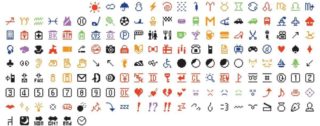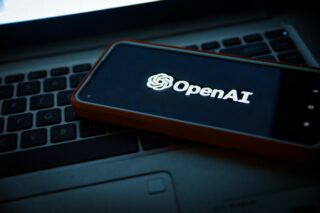Emoji Language History
Emojis are a ubiquitous part of everyday life for many people. Whilst really taking off in 2011 when Apple first offered its users the ability to send emojis on their mobile platform, their existence actually stretches back to the Japanese mobile phone operating systems of the late 1990s.
The word itself is a Japanese portmanteau, that is to say, a blend of two words combined to form a new word. It comprises of (e) meaning picture and (moji) meaning character. Though traditionally sent from one mobile phone user to another, today they have broken out of the bounds of mobile phone communication and can now be sent from inside many email programs as well as from a variety of messaging applications on the latest desktop and mobile operating systems from Microsoft, Apple and Google. The fact that there is ongoing support, maintenance and updating of emojis by such technology giants is an acknowledgement of what has become a 21st century staple of everyday communication.
In many ways emojis are much like the pictographs used in some ancient forms of communication that depict meaning through pictorial images. However, the emojis we know and use today are quite different from the original set first developed in 1999, both in graphic design quality, owing to technological advances, and in the range of items represented. But the heart of emoji communication remains the same and it started with an individual who desired to affect purely textual message with emotion and mood.
Origins of emoji development
The creation of emojis can be attributed to Shigetaka Kurita, who in the late 1990s was working on a project called i-mode for the Japanese mobile network operator, NTT Docomo. He and the team he was working with sought a way to enable messages to convey more meaning at a glance than might be gleaned from simple textual content alone. He was also concerned with encouraging and maintaining Japanese society’s cultural orientation for personal relatedness between individuals and groups. Through the creation of emojis he would provide a way for people to communicate more intimately, something he thought was missing from the email and text messaging systems of the day. Shigetaka drew inspiration from multiple spheres of everyday life from the weather symbols used by media outlets to Japanese Manga comics. Out of these beginnings came the first character set of 176 emojis, which first took off in their homeland of Japan but their use soon spread to the rest of the world.
With this development there came an increasing demand from mobile phone users to send pictorial messages. Towards the end of the 1990s as mobile phone usage in general increased there was also a sharp uptake in the number of picture messages being exchanged between mobile phone users. Support for exchanging emoji characters also circumvented the limitations of the number of characters that could be sent in a single text at the time, typically a maximum of 80 or 140 characters per SMS message. This meant users were able to describe multiple emotions or circumstances through these icons, which could act as a linguistic short-hand to express much longer and more complicated textual messages. At the same time mobile network operators benefited from using just a single character to send an emoji, resulting in the consumption of fewer resources.
Influence and importance
Fast forward to 2016 and emojis could be said to be part of the cultural fabric of many countries around the world. As one example, emoji has been described as the fastest growing ‘language’ in the UK. In fact, emoji use is so widespread that the word ’emoji’ officially entered into the Oxford English Dictionary in 2013, whilst just two years later the OED named the emoji representing ‘Face with tears of joy’ as the word of the year for 2015, as it is the most commonly used emoji in the UK.
This impact on the way in which daily communication is conducted means that emojis have come to represent a significant point in time as part of early 21st Century technological and artistic development. In 2016 the original emoji character set was acquired as part of New York’s Museum of Modern Art’s permanent collection, a testament to their global impact.
As of 2016 there are estimated to be in the region of 2000 emoji characters but despite this huge collection, emoji development doesn’t stand still. There is a rapid and ever expanding base of emojis being created and continual development by tech companies around the world. Their use is supported by all the major desktop and mobile platform developers, with year on year increases in the number of emojis added to their collections.
The impact of cultural context
With this development there has come a particular concern for representing diversity in emoji characters. Apple et al have therefore placed an onus on themselves to deliver a range of emojis that people from different racial, ethnic and sexually diverse groups can relate to. For example, in 2014, Apple expanded their character set to include a number of African-American emojis and in 2015 they enabled users to select from characters with various skin tones. Whilst tech companies are continuing to represent diverse groups of people in their emoji collections, they are ever expanding to accommodate more people groups with each new release.
Such is this depth of variety in emoji characters depicted around the world that there is now an increasing need for cross-cultural differences to be carefully considered when sending and translating the meaning of a message. Just as a word in one language can mean something entirely different in another, there is a need for cultural sensitivity when interpreting the meaning of emojis between countries. With this affect, understanding the importance of cultural context on emoji use shouldn’t be taken for granted as what they are communicating may have a certain unforeseen complexities. Contextualising and localising use of emojis and understanding how particular ones relate to a specific culture is now an important part of ensuring messaging containing emojis are effectively speaking to their audience.











